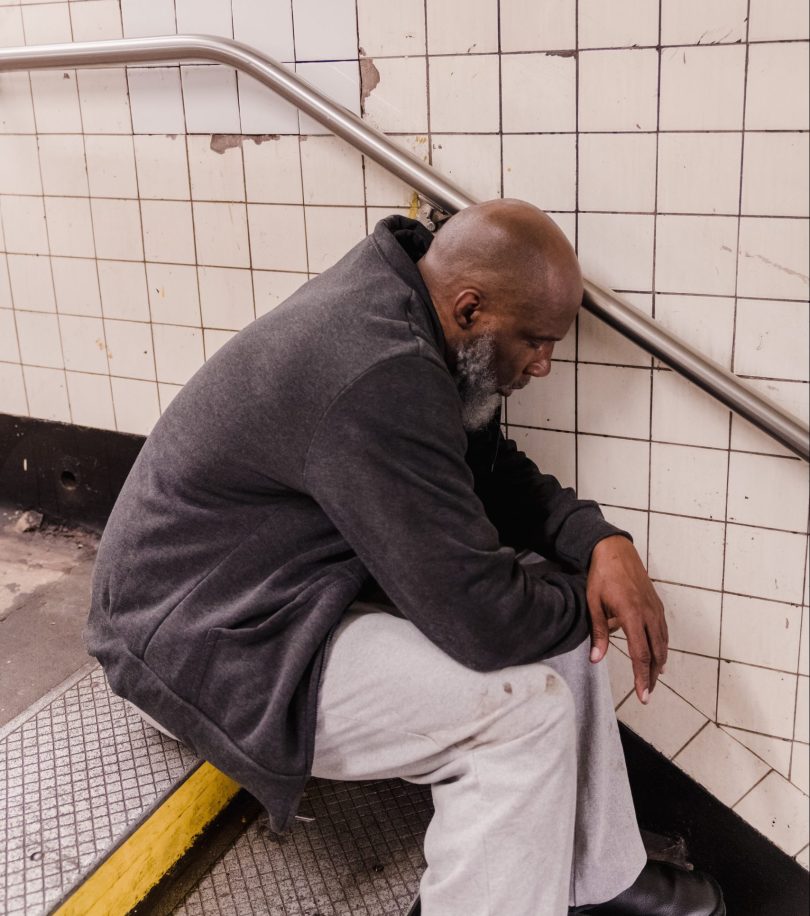New research suggests four elements of socioeconomic marginalization increase the risk of drug overdose: resource insufficiency, homelessness and housing, policing and criminalization, and gender and racial inequities.
People with unstable housing often have no option but to use drugs in public, which leads to more risky substance use and forces concealment, raising overdose risk. Policing and emergency responses drive less safe behaviors because of the fear of legal consequences – people will go to great lengths to avoid being caught, and may be reluctant to contact emergency services. Finally, socioeconomic marginalization intersects with gender and race-based disadvantage to amplify overdose risk.
Recently published in The International Journal of Drug Policy, the study led by Drs. Jenna van Draanen and Lindsey Richardson, identified these four key between socioeconomic marginalization and overdose risk across a final dataset of 27 studies.
Dr. van Draanen, the lead author, was a postdoctoral fellow at the BC Centre on Substance Use (BCCSU) and the UBC Department of Sociology at the time of the study, and is now an Assistant Professor at the University of Washington. Senior author Dr. Richardson, an associate professor in UBC’s Department of Sociology, was her postdoctoral supervisor. You can read more about Dr. Richardson’s work in this Daily Scan article.

Pathways connecting the aspects shaping overdose risk
These aspects play out through five pathways that the study identified: material, behavioral, psychological, social and environmental. All of them can interact with each other to amplify overdose risk.
A lack of material resources like housing, employment and income, or even the stress of socioeconomic marginalization itself, can cause people to adapt their behavior in a way that amplifies overdose risk. The psychological consequences linked with experiencing deprivation – distress, anxiety, and depression – can lead to higher risk drug use. Social networks or peer influences can also affect drug use, and physical, structural and contextual settings can influence overdose risk because of the socioeconomic marginalization associated with those environments.
“These pathways all have different qualities or different characteristics, but they all can lead to elevated overdose risks,” says Dr. Richardson.
One of the more novel findings of the study was that that the way institutions respond to overdose can exacerbate overdose risk. Experiencing an overdose, in and of itself, can increase an individual’s socioeconomic marginalization – further amplifying their risk of overdose.
“There is an institutional pathway at play that reinforces the entire system, where criminalization of substance use can further deepen poverty and marginalization,” says Dr. van Draanen.
Synthesizing research to understand a whole body of evidence
Their studytook the form of a systemic review, a category of research that summarizes other research.
“[Systemic reviews] are particularly powerful because they essentially help decision makers, policymakers, the general public and other researchers understand not just what one study says, but what a whole body of evidence says,” says Dr. van Draanen.
The study received funding through a federal grant meant to support different approaches of synthesizing research findings and making them usable in government spaces and policymaking. The researchers partnered on this grant with local, provincial, and public health stakeholders who were interested and ready to use this research directly in their work.
The researchers conducted a comprehensive review aimed at capturing all research findings that currently existed on the intersection of overdose and socioeconomic marginalization. They wanted to know what it actually was that connects socioeconomic marginalization to overdose risk, so their partners could use their work to make better policy in response to the overdose crisis.
“[This study] really tries to dig down into what’s actually going on here. What can we say about how people manage their socioeconomic disadvantage, how people living in poverty contend with the dynamics of living in poverty, and how does that actually influence their substance use patterns and their likelihood of overdose?” says Dr. Richardson.
Concretely linked socioeconomic marginalization to overdose risk
This is one of the first systematic reviews of qualitative studies linking socioeconomic marginalization and overdose. It provides an overarching viewpoint on the research in this area, which can serve as a resource for researchers moving forward. Significantly, the study also reinforced how institutional policies people’s reactions to them have important roles in shaping overdose risk.
“I think there’s an under-emphasis and under-appreciation of the way social factors impact overdose, and the way things that actually are good for the health of communities generally can actually also be good for the overdose crisis. So, things like stable housing, strong education systems, supportive employment, resource sufficiency and income support programs,” says Dr. van Draanen.
This study shows the mechanisms and pathways connecting socioeconomic marginalization and overdose risk to hopefully improve policy in dealing with the overdose crisis.
“[This study] really reinforces that there is a wide range of pathways and mechanisms that concretely link poverty and socioeconomic disadvantage to overdose risk,” says Dr. Richardson.
To learn more about this topic, check Volume 3 of the BCCSU’s Research & Dialogue Speaker Series, “Social/Economic Disadvantage and Well-being among People Who Use Drugs,” which will be presented by Dr. Richardson.
Story by Grace Jenkins, Providence Research





